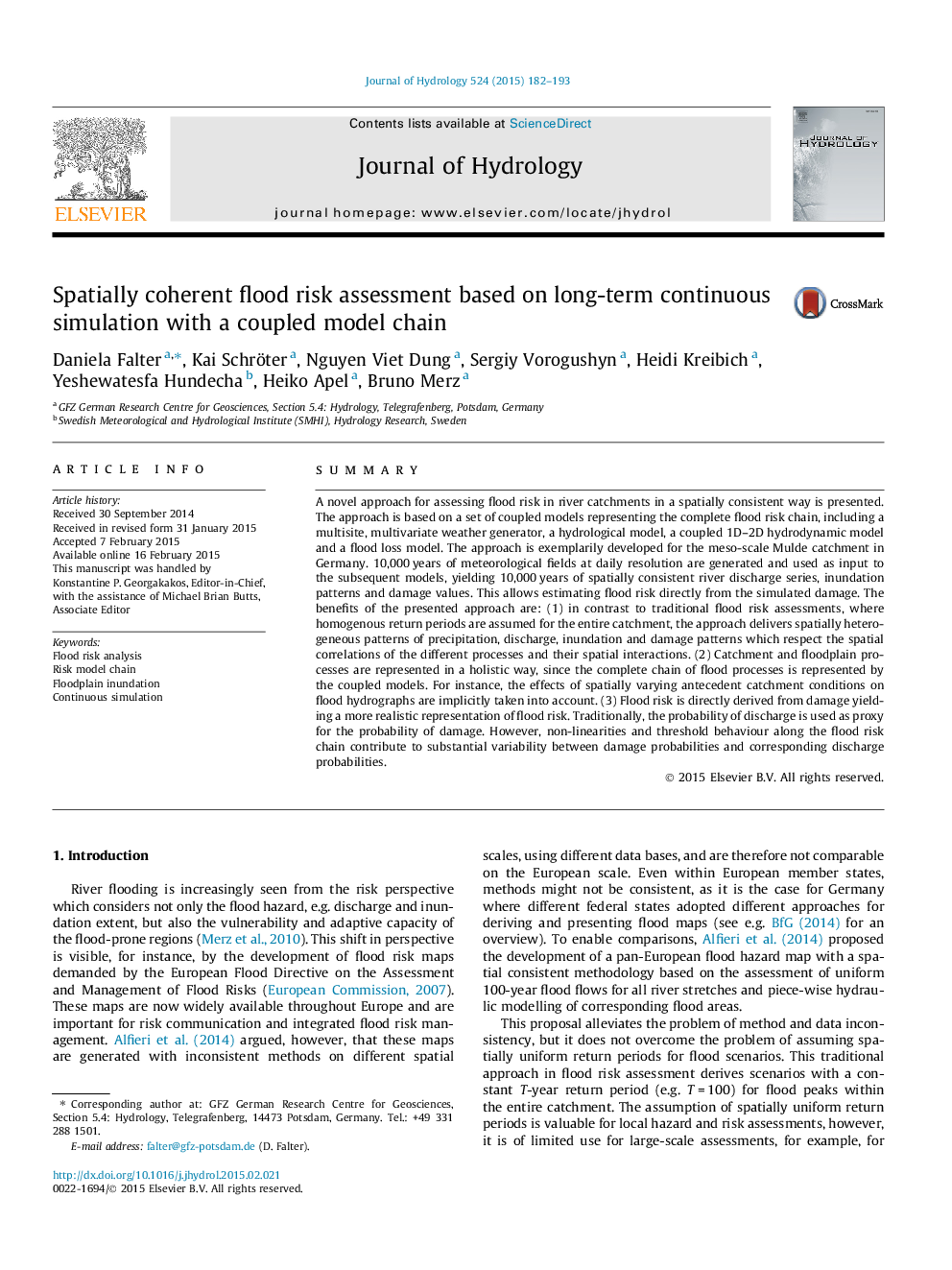| Article ID | Journal | Published Year | Pages | File Type |
|---|---|---|---|---|
| 6411403 | Journal of Hydrology | 2015 | 12 Pages |
â¢A novel approach to flood risk assessment based on continuous simulation.â¢A spatially coherent holistic risk model chain.â¢Damage probability is estimated from 10,000 years of synthetic climate data.
SummaryA novel approach for assessing flood risk in river catchments in a spatially consistent way is presented. The approach is based on a set of coupled models representing the complete flood risk chain, including a multisite, multivariate weather generator, a hydrological model, a coupled 1D-2D hydrodynamic model and a flood loss model. The approach is exemplarily developed for the meso-scale Mulde catchment in Germany. 10,000Â years of meteorological fields at daily resolution are generated and used as input to the subsequent models, yielding 10,000Â years of spatially consistent river discharge series, inundation patterns and damage values. This allows estimating flood risk directly from the simulated damage. The benefits of the presented approach are: (1) in contrast to traditional flood risk assessments, where homogenous return periods are assumed for the entire catchment, the approach delivers spatially heterogeneous patterns of precipitation, discharge, inundation and damage patterns which respect the spatial correlations of the different processes and their spatial interactions. (2) Catchment and floodplain processes are represented in a holistic way, since the complete chain of flood processes is represented by the coupled models. For instance, the effects of spatially varying antecedent catchment conditions on flood hydrographs are implicitly taken into account. (3) Flood risk is directly derived from damage yielding a more realistic representation of flood risk. Traditionally, the probability of discharge is used as proxy for the probability of damage. However, non-linearities and threshold behaviour along the flood risk chain contribute to substantial variability between damage probabilities and corresponding discharge probabilities.
